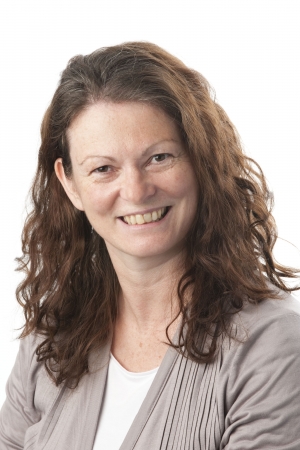Preventing arthritis in women - the missing link?
Research news
Geelong-based researcher Dr Sharon Brennan has found that healthy bones around the spine and hips may be associated with healthy knee joints, a breakthrough that could lead to better ways to deal with osteoarthritis – something for which there is no known cure.
While previous studies have examined bone density and cartilage volume at the knee, there is little known about bone density at sites distant to the knee and the relationship with knee cartilage.
Furthermore, the relationship between bone density and knee cartilage in young females without osteoarthritis has not been looked at before.
“Our findings using the Geelong Osteoporosis Study (GOS) data reveal that higher bone mineral density at the spine and hip was associated with more cartilage volume in the knee; suggesting that healthy bones may be associated with healthy knee joints,” said Dr Brennan, a Research Fellow working in the Barwon Epidemiology and Biostatistics Unit at Geelong Hospital, a partnership between Barwon Health and Deakin University’s School of Medicine.
“Osteoarthritis is a chronic long-term condition, and a significant cause of pain and loss of quality of life.
“Essentially there is no known cure for osteoarthritis, so identifying risk factors for onset or progression of the disease is important.
“A total of 160 women enrolled in the GOS underwent MRI on their dominant knee, and cartilage volume was measured from the MRI images
“The women themselves were young to middle aged, and did not have osteoarthritis.
“This is the first study to examine the association between site-specific bone mineral density and properties of the knee structure in healthy young females without osteoarthritis, using MRI to measure knee structures.
“These findings are important, because one of the defining characteristics of osteoarthritis is cartilage loss, and by the time the first signs of radiographic osteoarthritis are present, 10% of cartilage volume has already been lost.
“It is imperative that we continue to investigate changes in the knee structure prior to the onset of osteoarthritis, and this study begins to fill a gap in international knowledge.
“MRI provides an innovative way to examine knee structure using 3–D technology, and provides a much more sensitive measure of cartilage than is possible using 2-D X-rays. Importantly, using MRI enables us to visualize the knee BEFORE disease is present, whereas X-ray just isn’t sensitive enough to allow that.
“People need to have a healthy lifestyle to reduce the potential for osteoarthritis.
“They need to maintain a healthy body weight, and remain physically active.
“Although the association between osteoporosis and osteoarthritis is controversial, these findings suggest that healthy bones may be associated with healthy knee joints.
“To examine this further, these women have recently undergone a follow up MRI, which will enable us to examine change in the knee structure over time and further elucidate predictors of this debilitating disease.”
Dr Brennan, who grew up in Indented Head and gained her PhD at Monash before returning to Geelong, was recently awarded a prestigious and highly competitive Fellowship from the National Health and Medical Research Council of Australia. This research has won her international recognition and was published in June 2011 in Bone; the second top international journal in the field of bone and mineral research.
Dr Brennan works under the supervision of Deakin University’s Associate Professor Julie Pasco at Barwon Health, with the Barwon Epidemiology and Biostatistics Unit (BEBU) in Kitchener House. At the heart of the unit lies the Geelong Osteoporosis Study (GOS), an umbrella term for a program of research involving large case-control and prospective population-based studies in both men and women.
The primary focus of the GOS is to describe the burden of osteoporosis in the general population and to identify risk factors for fracture. The study was initiated in 1993; since then 1700 women and 1500 men, randomly-selected from the electoral rolls, return to the study centre at Barwon Health every few years to have their health monitored.
The scope of the GOS has expanded over time to study the causes of other disorders including obesity, cardiovascular disease, diabetes, cancer, coeliac disease, wheat atopy and psychiatric illness; examining osteoarthritis is a more recent development.
Dr Brennan’s research focuses on osteoarthritis, but also the social determinants of disease, areas in which she has published widely in leading international journals.
This project is in partnership with Monash University’s Department of Epidemiology and Preventive Medicine, and also the University of Melbourne’s NorthWest Academic Centre, Department of Medicine.
Share this story
 Dr Sharon Brennan
Dr Sharon Brennan
